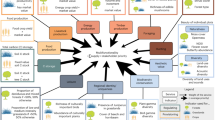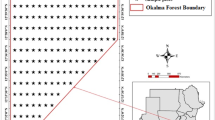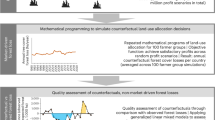Abstract
The past two decades have seen sales of millions of acres of commercial forest land in the United States. Changed ownership often results in altered forest management, parcelization or development. Such changes have profound implications for forest species and ecosystems, as well as the timber industry, recreational opportunities, and local and regional economies. An emerging strategy seeks to protect lands through complex public-private partnerships involving state agencies, conservation organizations, and commercial investors. By definition, these partnerships have both environmental and socioeconomic goals; as such, they represent contemporary experiments in sustainable development applied to forested landscapes. As this approach is a recent innovation, its benefits for nature and people have yet to be demonstrated, and the general applicability of this integrated approach to conservation is unknown. Our objective is to identify context-specific objectives and indicators to support integrated monitoring and adaptive management for the former Finch Pruyn lands, which encompass 161,000 acres in the Adirondack region of New York State. This interdisciplinary project involves social science faculty and students from Cornell University and cooperation from conservation scientists from The Nature Conservancy. Through a review of the literature on criteria and indicators for sustainable forestry, we developed an analytical framework for measuring ecological, social, and economic implications of forest management practices. Through key informant interviews, we identified context-specific objectives and indicators for the Finch Pruyn lands, including forest health, species protection, expanded recreation opportunities and community economic vitality. Our approach allows us to compare existing commitments to collection of monitoring data to ideal data sets as defined by actors occupying various structural positions. Identification of potential gaps in monitoring represents an opportunity for dialogue, reallocation of resources and enrollment of new strategic partners. Over time, these global and local indicators can support an adaptive framework through which flows of information inform management in an iterative process. Preliminary results indicate that this project entails several innovations that may contribute to its success, including the development of a comprehensive ecological baseline and the explicit engagement of local claims to livelihoods and access. We make several recommendations for future working forest agreements, such as the need to define clear environmental and socioeconomic goals at the outset, and, when private philanthropy is central to project viability, the incorporation of monitoring costs into initial fundraising targets. We believe these lessons are applicable to conservation development projects in the Northern Forest region and beyond.
Similar content being viewed by others
Article PDF
Author information
Authors and Affiliations
Corresponding author
Rights and permissions
About this article
Cite this article
Neugarten, R., Wolf, S. & Stedman, R. Cutting the trees to save the forest: The Finch Pruyn working forest. Nat Prec (2009). https://doi.org/10.1038/npre.2009.3690.1
Received:
Accepted:
Published:
DOI: https://doi.org/10.1038/npre.2009.3690.1



